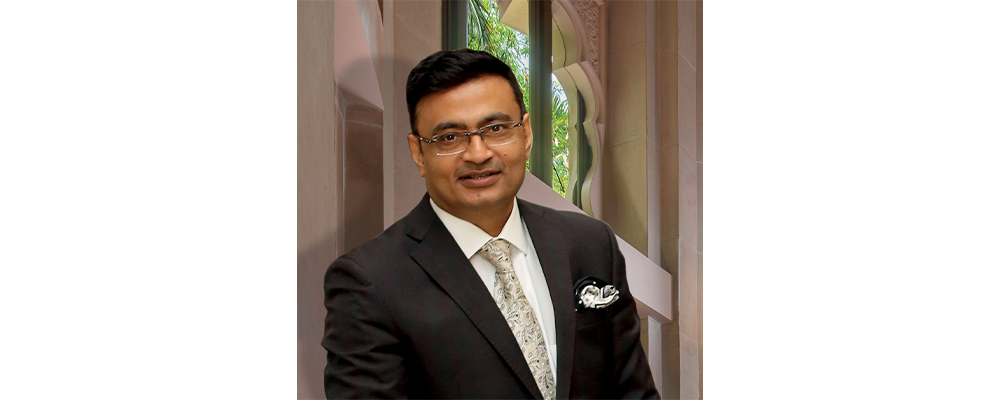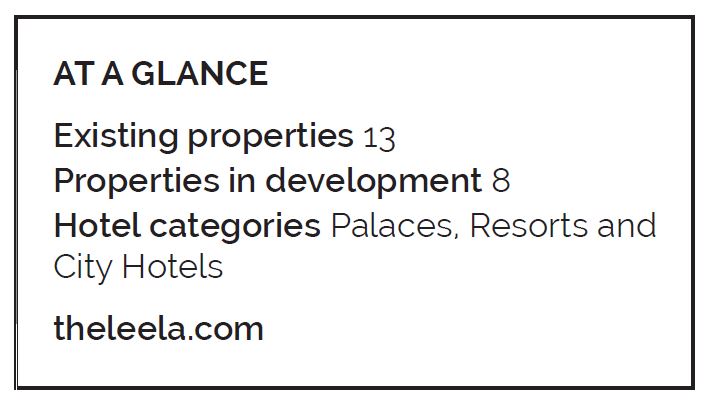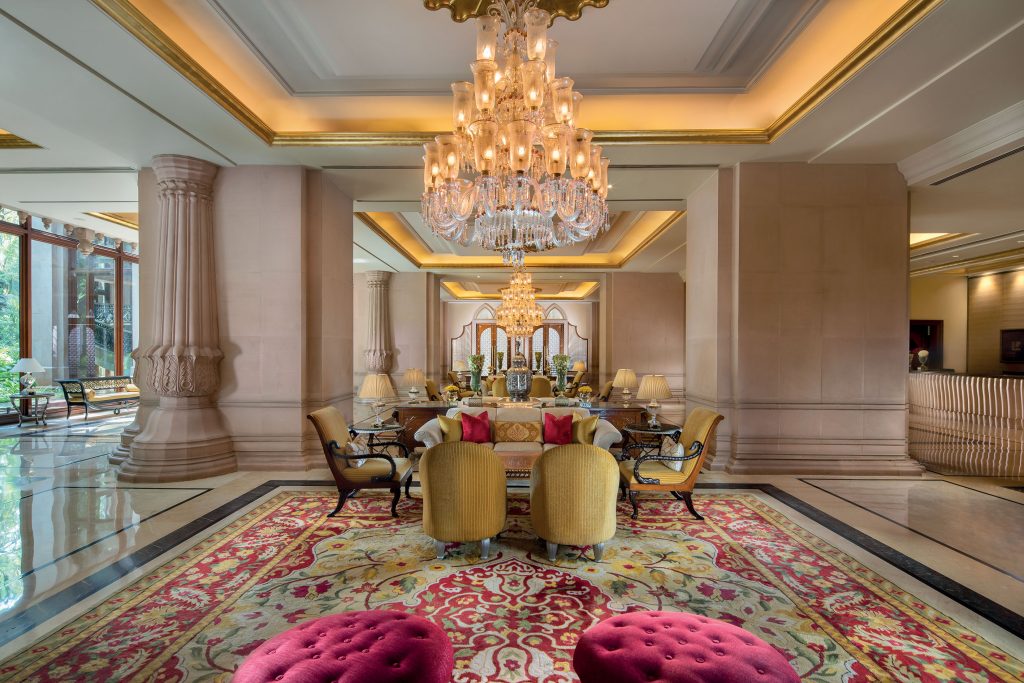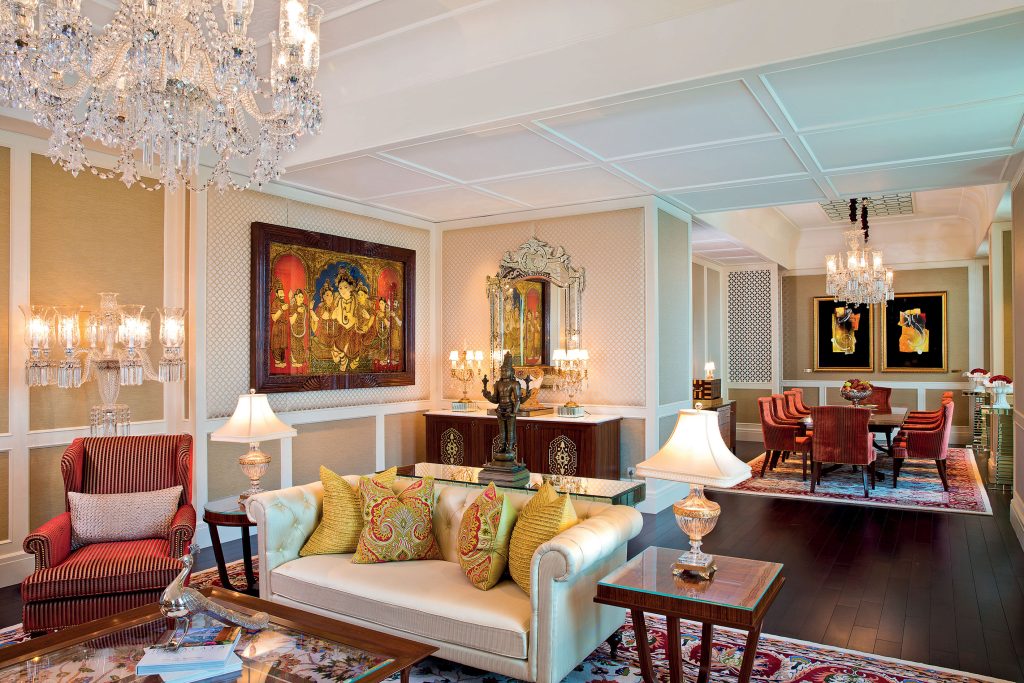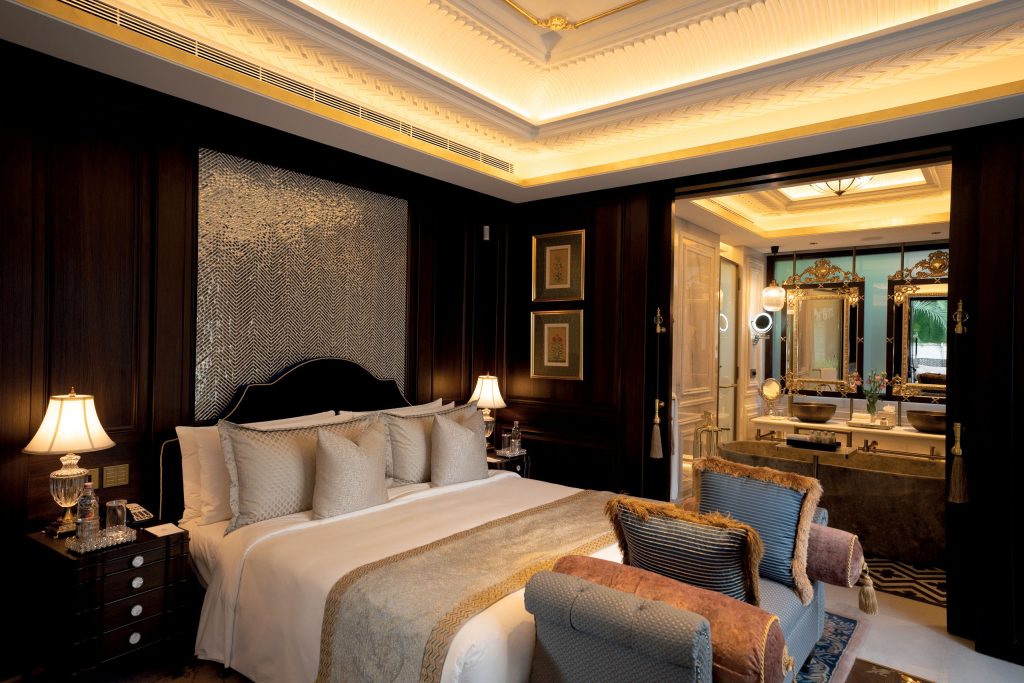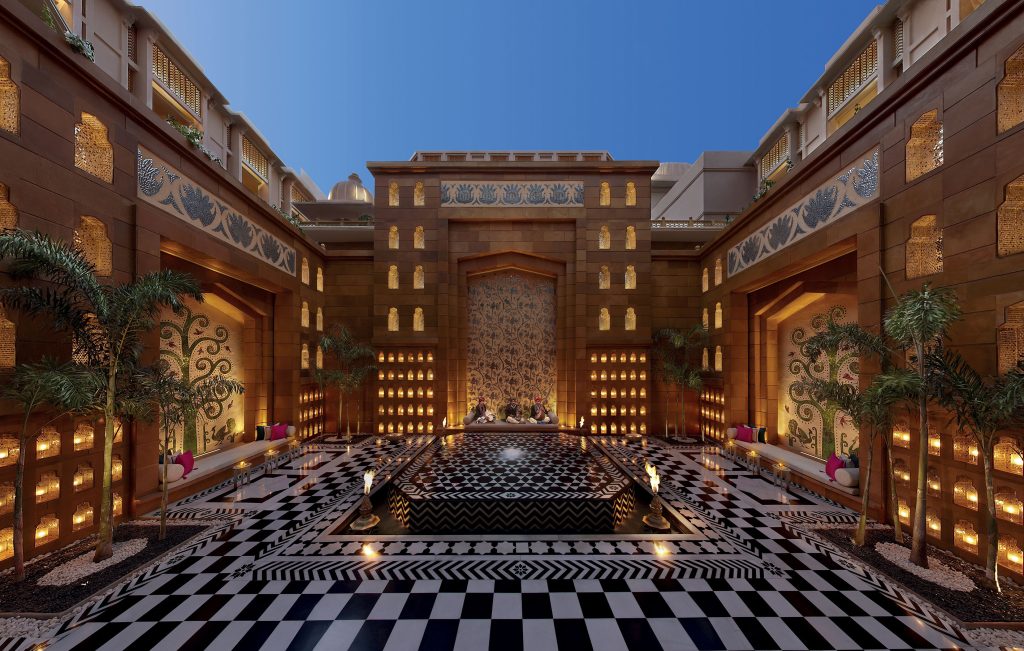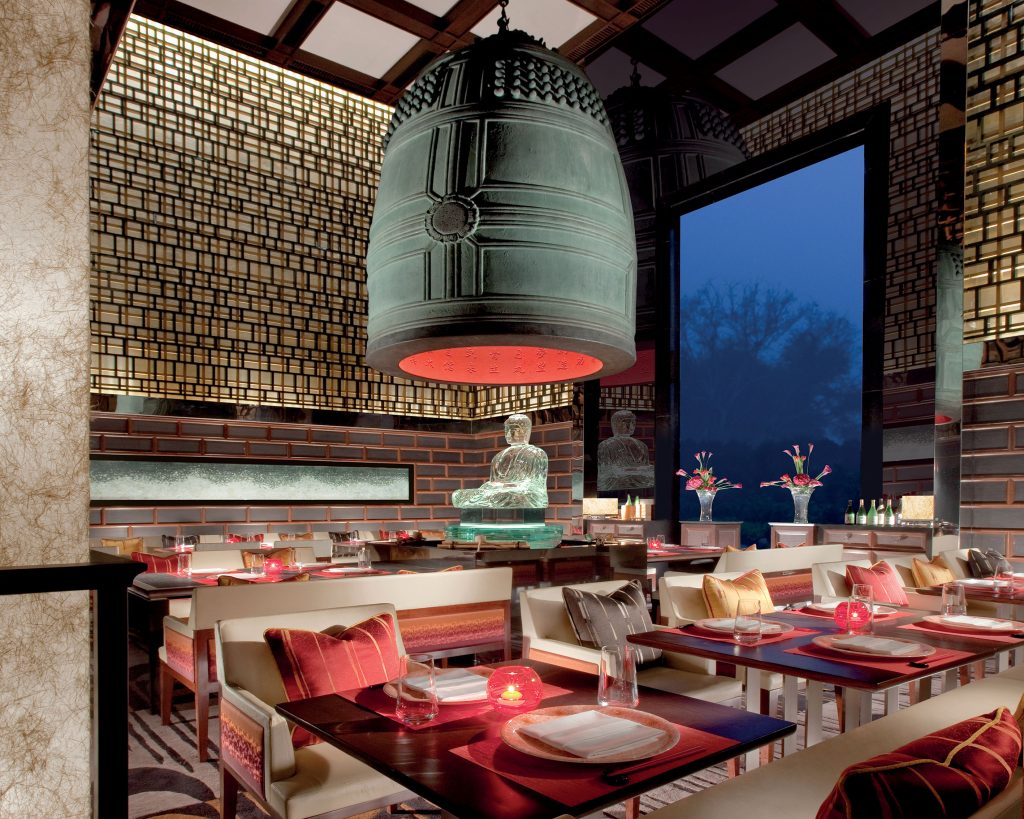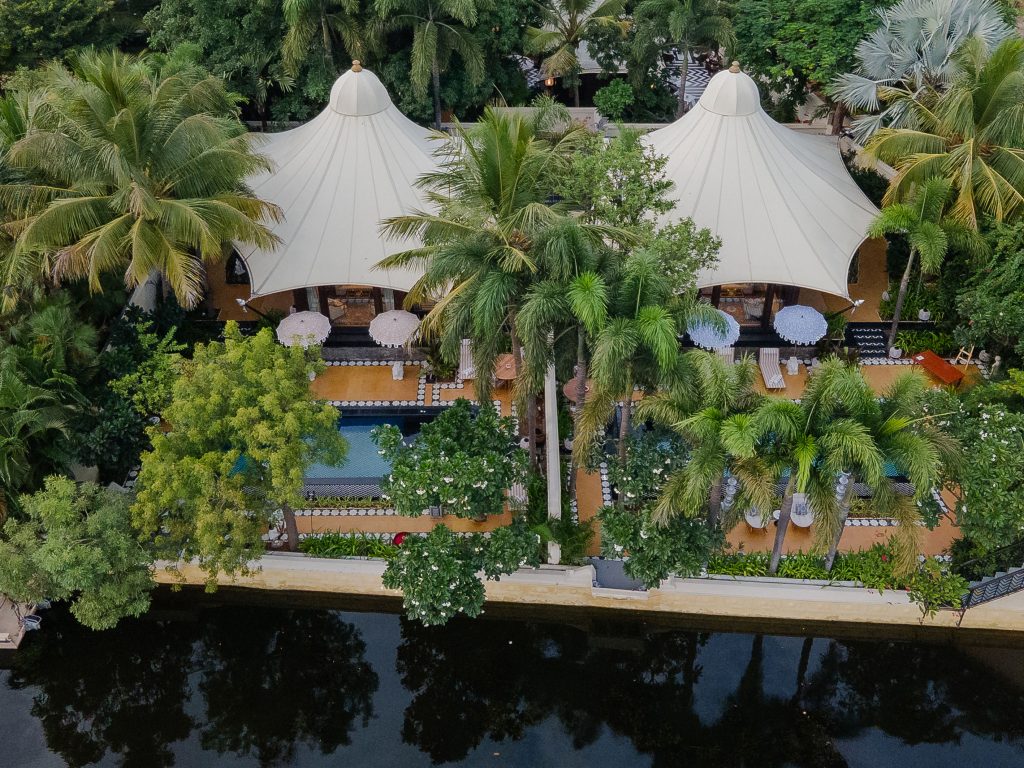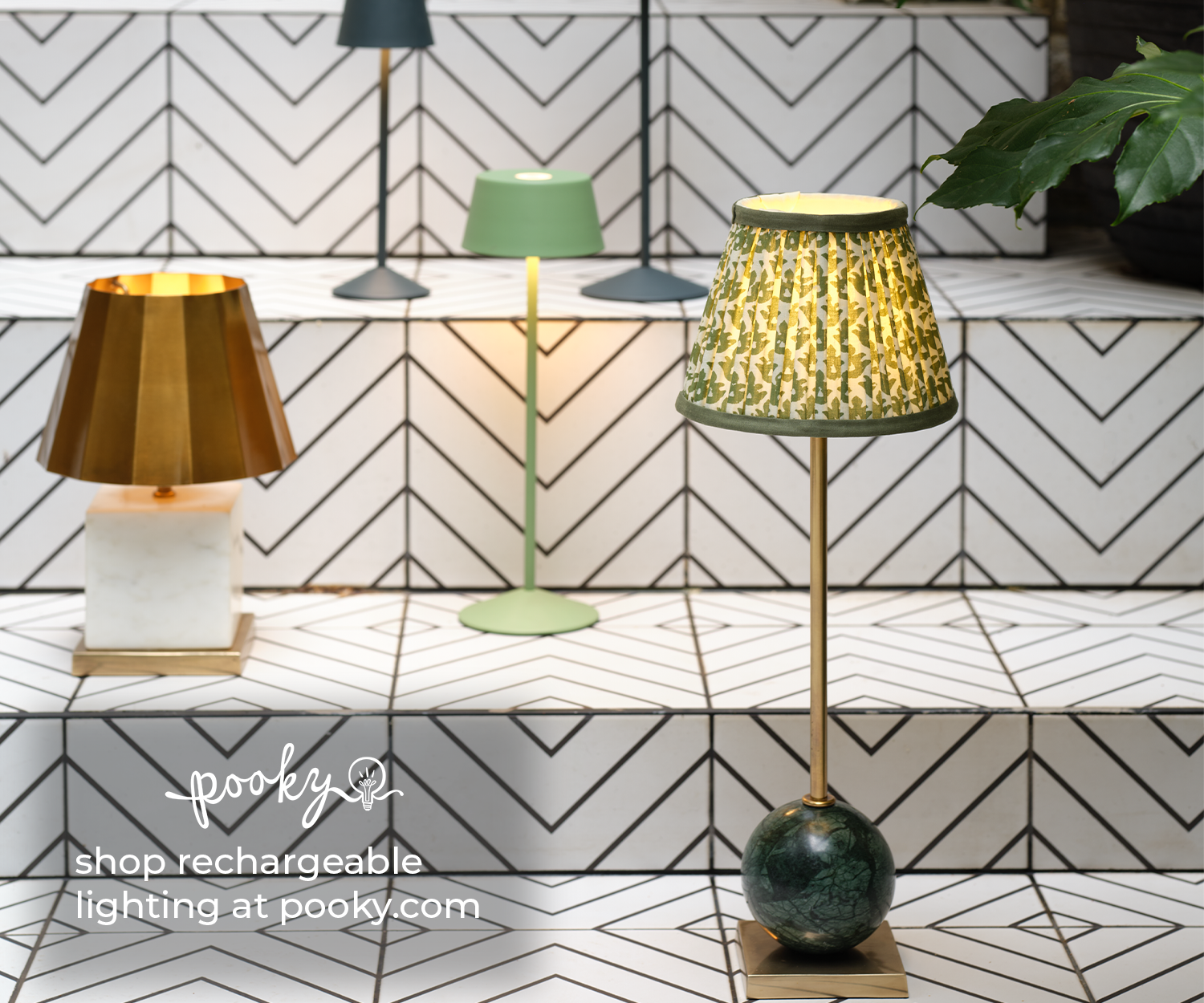Anuraag Bhatnagar, CEO Leela Palaces Hotels and Resorts
Under CEO Anuraag Bhatnagar, Leela is scaling its legacy of design, service and sustainability to cement its position as India’s leading luxury hospitality brand. In conversation with SPACE, Bhatnagar discusses the future of Indian tourism, discerning guest expectations and a new wave of iconic Leela properties.
Whether or not you’ve ever crossed the marble threshold of a Leela Palace, chances are its reputation has preceded it – and, if anything, your imagination doesn’t quite match the reality. Wrapped in handcrafted opulence and Indian elegance, each of its properties are considered and curated at every decorous turn.
Responsible for ensuring these expectations are met – with the jasmine-scented promise of going over and above is Anuraag Bhatnagar, CEO of The Leela Palaces Hotels and Resorts.
With over thirty years in hospitality, Bhatnagar’s journey is a story of both passion and pragmatism. His early career saw him rise through the ranks at Oberoi and Starwood, before the latter’s acquisition by Marriott brought him into the orbit of some of the world’s leading luxury brands. But it was Leela’s uniquely Indian take on luxury that ultimately captured his imagination. “Even when I wasn’t working for Leela, I would walk into a Leela hotel and think, ‘Wow, how did they create this?’” he recalls.
The allure was not just in the glamour (of which there is plenty) but in the brand’s commitment to quality, design and service – a commitment he has worked to preserve and enhance since taking the helm five years ago. Since the opening of its first property, The Leela Palace Mumbai in 1986, the brand’s positioning has been unambiguous sitting firmly at the top of the country’s luxury market. “We are a home-grown Indian brand, and in terms of average daily rates we generate almost 40% more than other luxury brands,” Bhatnagar notes, adding that Leela’s total RevPAR is similarly elevated.
And who exactly is paying these premium prices? “About 50% of our guests come from outside India, so it’s a healthy mix of international and domestic travellers. It’s a broad spectrum, with a lot of entrepreneurs and thought leaders – accomplished individuals. In India, luxury is becoming more democratic and inclusive. Interestingly, the average age profile of our guests has also shifted. It used to be people in their late 40s and early 50s, but now it’s more mid- to late-30s.”
By all accounts, the affluent Indian tourist is a demanding soul – and few understand their needs better than Bhatnagar. “I would say they are very aware,” he tells me diplomatically. “They are well travelled, well educated, and accustomed to luxury. They know exactly what they want and expect an intuitive service.” He shrugs, as though merely stating the obvious. “Which is why we have to ensure we are always at the top of our game – the expectations are high.”
Leela’s competitive set is global. Four Seasons, Mandarin Oriental, The Peninsula and Rosewood, amongst others, are all seen as peers. “There is a bouquet of brands we peg ourselves against,” Bhatnagar tells me, explaining that Leela’s quality assurance programmes regularly benchmark against these international heavyweights. Yet the brand’s Indian heritage remains its defining feature – a point of pride and a source of differentiation.
Curious about the rise of boutique, laid-back luxury in India, I ask Bhatnagar whether he sees this as competition or simply a sign of a growing market. He smiles, unfazed by the trend. “There’s plenty of room for everyone,” he assures me, before laying out Leela’s impressive reach: thirteen hotels already open, from the bustling business hubs to the country’s most coveted leisure escapes, and eight more on the way – including a palace in Agra with views of the Taj Mahal, a heritage fortress in Rajasthan, and retreats in the hills and spiritual heartlands.
What strikes me is his confidence in the sheer scale of India’s luxury market, which he believes is set to triple in the next five years, reaching 220 million households. It’s a boom driven largely by domestic travellers, though he’s quick to point out that international visitors are on the rise, and appreciating India’s extraordinary mix of history, wildlife and natural beauty. For Bhatnagar and Leela, it’s not about chasing trends, but about being where the new Indian luxury traveller wants to go.
What many would argue sets Leela apart, however, is its design philosophy. Each property is a study in both grandeur and local nuance. “All our hotels are in iconic, hard-to-replace locations,” Bhatnagar explains. “Our asset quality, the build quality of our Palaces and City hotels, is absolutely top notch. The average room size at Leela’s flagship New Delhi property, for example, is 55 square metres.”
The design process across the portfolio is both centralised and collaborative. “We have a whole internal technical and architectural team for design development. But in addition to that, we also work with some of the biggest names including Bill Bensley and Jeff Wilkins. We then bring in a lot of local talent – interior designers and artists in every destination – because that’s very much what we stand for.”
When I ask about the individuality of each property’s look, he is quick to explain: “We have guidelines for each of the brands. For instance, Leela Palaces will always have a palatial quality about them. Everything will be crystal, mirrors will always be bevelled, wood will have inlay work, and there will be an abundance of Mother of Pearl. There will always be a sweeping staircase… I could go on and on,” he laughs. “Leela City and Leela Resorts will have their own guidelines, relevant to their audience – whether business or family. But there is a crossover of certain elements, which creates a common design language whilst allowing for a property’s local narrative.”
As CEO, does he work closely with the design teams? At this, he grins. “Yes, I do – especially of late. But that’s because I’m getting so excited about the new projects. However, it’s essential that the design teams communicate with operations – form must follow function.”
Sustainability is woven into the business model. Over half of Leela’s energy comes from renewable sources, and the company has invested heavily in water recycling, plastic reduction and waste management. Social responsibility is equally important, with local artisans and women’s cooperatives playing a role in everything from upcycling flower petals to nightly cultural performances.
Looking ahead, Leela’s ambitions extend beyond India’s borders. The brand is exploring opportunities both in markets where it already enjoys recognition and in key source destinations for Indian travellers. New ventures, including a members-only club and ARQ at Pichola, a bespoke collection of ultra-luxury villas on the shores of Lake Pichola – are designed to strengthen guest engagement while opening up new revenue streams.
For all its achievements, Leela is a brand that refuses to stand still. Bhatnagar’s vision is clear: to create an ecosystem of luxury that is both scalable and sustainable, rooted in Indian heritage yet open to the world. “We are always looking at what’s next – how to stay at the top of our game, how to surprise and delight our guests,” he says.
In a market crowded with new entrants and shifting expectations, staying relevant is never simple. But as an observer, Leela seems to be getting it right – by remaining true to its original ambition. As much as pared-back, barefoot luxury has its own audience, Leela is a reminder that there is still a powerful appetite for the ‘more is more’ style of luxury. And who better to deliver it than a brand that has never strayed from its founding vision?



